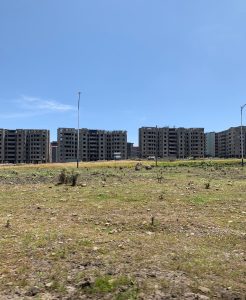Despite evolving evidence that Africa is experiencing urbanization in a different way, empirical evaluations of the welfare implications of urban-development programs in Africa remain scant. We investigated the welfare implications of recent urbanization in rural areas and small towns in Ethiopia using household-level longitudinal data and satellite-based night-light intensity. Controlling for time-invariant unobserved heterogeneity (across individuals and localities) and exploiting intertemporal and interspatial variation in satellite-based night-light intensity, we found that urbanization, as measured by night-light intensity, was associated with significant welfare improvement. In particular, we found that a one-unit increase in night-light intensity was associated with an improvement in household welfare of about 2%. Much of this was driven by the increase in labor-market participation in the non-farm sector, mainly salaried employment, induced by urbanization. Other potential impact pathways, such as an increase in consumer prices or migration explained little (if any) of the change in household welfare. Finally, our quantile and inequality analyses suggested that the observed urbanization had a negligible effect on the distribution of household welfare. Our results can inform public policy debates on the consequences and implications of urban expansion in Africa. Read more.
